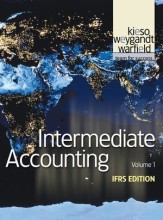Summary: Informatie Management
- This + 400k other summaries
- A unique study and practice tool
- Never study anything twice again
- Get the grades you hope for
- 100% sure, 100% understanding
Read the summary and the most important questions on Informatie Management
-
2 week
This is a preview. There are 11 more flashcards available for chapter 2
Show more cards here -
Needle’s Business in Context Model
§Activity Level - operations, plus support functions
§Structural Level - strategyand management
§Organizational Level: - ownership, size, culture, goals
§Environmental Level: - economyand society -
Factors in the business environment include:
§The economy
§The state andpolitics
§The labour market
§Social andcultural Factors
§Technology -
The organisation has defined relationship with the environment:
§Trading partners: Buy-Side (suppliers)
§Trading partners: Sell-Side (business andretailconsumer)
§Outsourced facility providers
§Governmentalorganizations Organisationsnowoperate in the context of a globalisedworld. -
3 week
This is a preview. There are 13 more flashcards available for chapter 3
Show more cards here -
The information need of a Hotelmanager
Operation
-Overall Quality level: Complaints, incidents
-Marketing: How manyguests (occupancy), where do theycomefrom, howdidtheybook?
Support functions
-Finance: Occupancy, sales data restaurant
-Sales: sales data restaurant (F&B), rooms
-Logistics: delivery times (F&B)
Management
-Employees: schedule, absence, performance
Environmental
-Environmental: Activities in the city
-Environmental: Competitors: promotions/prices -
4 week
This is a preview. There are 5 more flashcards available for chapter 4
Show more cards here -
Computers and information Technology 2 options:
Centralized
– Standardisation / Lowercosts
– Bureaucratic / Slower
– More involved with company
Decentralized
– More flexible / Highercosts
– Short communicationlines / Faster
– More involved with department -
Analyzing two components:
-Information Pull: users needanddemandtoknow more
-Technology Push: technology advances with more power, speed, scope andways of operating.
-Examples: dashboards, mobile payment, chip your pet -
IT – Computing model – Client-server system
This is a distributed model of computing – the system is wholly (or partly) located on the server andit is accessibleby users throughtheirclient computers, typically a PC.
Web services:
-Service provider: the application (IS), available on a web server
-Service requester: the client (user)
-Service registry: electronic index of available services
Cloud computing
One way of consuming computer services is to make use of the (or a) cloud – a third party provider of IT facilities.
The suggestion is that computing is a utilitythatshouldsimplybebought – the users neednotknowhow IT services are provided or wherethey are located – theycanjust make use of the cloud IT. -
The future of information technologie
-Communication likeit´s next door
-Guidance system on the floor
-Information/phone cards
-`Newspaper`: Foldable information panel
-Glass panels with information
-Easy copying&pastingfromandto different panels
-House system -
Enterprise Resource Planning (ERP) as a solution?
1- Examine business process
2- Make a program of Requirements
Investigatesuppliers of IS:
3- Analyse suppliers
4- Make a Business case
5- Demonstrationtoseehowitworks
6- Yes or No
7- Negiotateabout a contract... -
5 week
This is a preview. There are 15 more flashcards available for chapter 5
Show more cards here -
Electronic Data Interchange (EDI)
an automated trading process used by business
- Higher grades + faster learning
- Never study anything twice
- 100% sure, 100% understanding































